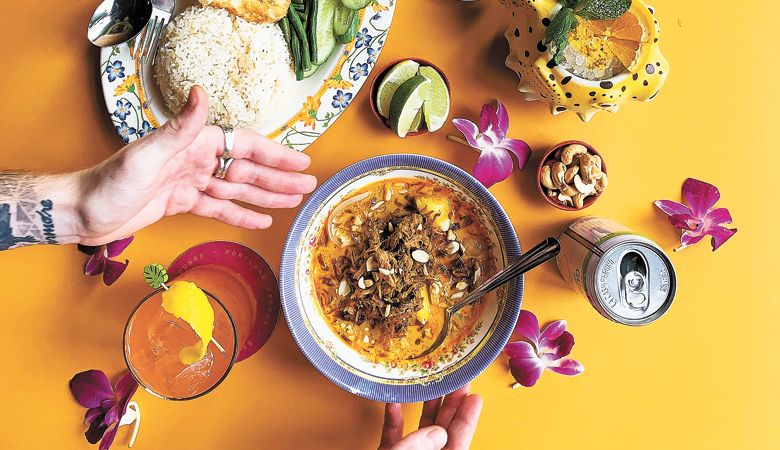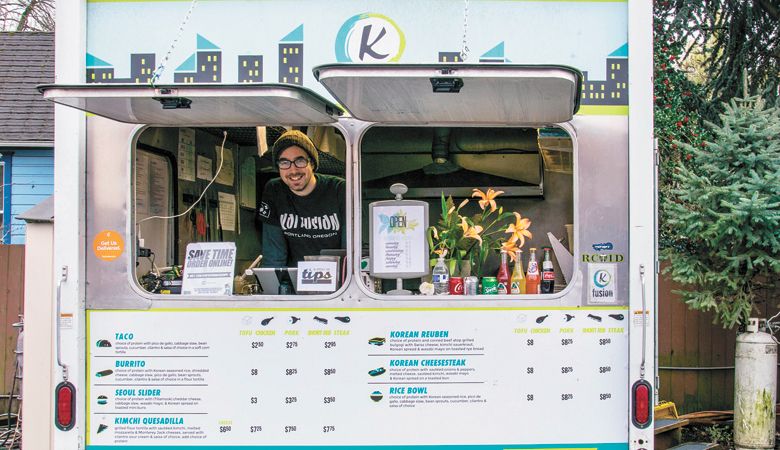Flavor in Fusion
Culinary worlds collide creating imaginative Asian fare
Fusion is one of those words in food that isn’t always endearing. Just because you have the mettle to rope together Lebanese cuisine with Spanish-style tapas does not mean you have a good recipe.
Some styles and flavors match better than others. It’s a pairing game requiring a lot of trial and error, especially considering most single culinary genres are worlds unto themselves.
Additionally, when ethnic food of any kind is subjected to non-traditional treatment, it may tread in or perilously close to cultural appropriation waters. This is a place a few Northwest eateries have found themselves over the last several years, and the result is almost universally bad. It’s usually far more subtle that the frat guy donning a Native American headdress, but it can be off-putting and insensitive nonetheless.
Fortunately, in food land, creativity expression and thoughtful riffs on fusion are generally the norm. Some of the most talked-about restaurants today are ones that weave together unlikely international regions in informed, celebratory ways. They practically raise a glass to a shrinking world — one in which varying people and customs bump against each other constantly in a diversity dance of sorts.
Asian fusion, in particular, has become something of a cliché. Some of the most stereotypical elements of Chinese cuisine and those from a different part of the world are welded together and a “fusion” label is slapped on the eatery’s window. Again, food styles are more social than others, eager to get out there and find a good partnership.
At Eem in North Portland, there is no shortage of surprises. The restaurant blends Thai fare with Texas barbecue and does so rather seamlessly. You know you’ve entered a worldly den as soon as you walk in the door, with neat stacks of smoking woods set beneath rows of exotic herbs, tropical fruit elixirs and tiki mugs. The air is thick with an intoxicating cloud of sweet, spicy, fruity and smoky.
A joint project by Earl Ninsom of Langbaan and Hat Yai and Matt Vicedomini of Matt’s BBQ — a place even Texas Monthly magazine fully endorses — Eem is wildly adventurous. Think cheeseburger with Jaew sauce, cheddar and American cheese and nahm prik noom, served on a sweet Hawaiian bun. Or shrimp and grits with Thai chili jam, jasmine rice porridge, ginger and roasted carrot.
Such food begs for equally experimental wines. While the cocktail program at Eem is tremendous, this is a wine publication so we’ll stick to what we know. The restaurant touts a short but mindful list, with options like Bow & Arrow Gamay, Loop de Loop Pinot Noir, rosé from the Languedoc and Prosecco. Follow the lead of your server but don’t be afraid to try some more daring pairings of your own.
Whether you bring in your own wine or are cooking something similar at home and looking through your options, think refreshing. You need something to cut into the inherent spiciness of Thai while complementing its exotic and herbal elements. You also need something that can stand up to smoked meats like pork ribs and grilled shrimp. Oregon Sauvignon Blancs and Rieslings jump to mind, along with more involved rosés made from varieties like Tempranillo or Cab Franc. A tropical-flavored Chardonnay is great, too, especially if it has a little more weight.
For reds, bright and agile is the way to go, hence Eem’s reach toward Gamay and Pinot. A fruity Southern Oregon Syrah can do the trick, as can the same varietal from its umami-driven sibling region in The Rocks District on the Oregon side of the Walla Walla Valley. Pinot Noir remains a great option, it must be said, especially the whole-cluster versions that show stem-y, green pepper and subtly spicy notes that shine next to a complicated chili paste or brisket with a fish-sauce dressing.
Eem’s made the biggest splash in the local culinary fusion scene as of late, but it’s not the only worthy show in the area. The story of Koi Fusion is a bit like a Willamette Valley rite of passage, a small chain that started as a single delicious food cart. The restaurant marries Korean food with Mexican.
Founder Bo Kwon brought some of the snacks and meals he grew up on to the first cart he acquired. It had been run by a Mexican eatery, and he learned the ropes of the cart from the previous owners. It was the makings of an unlikely mashup that’s now beloved for offerings like kimchi quesadillas, Seoul sliders, and burritos, tacos, hot dogs and more featuring accents like wasabi mayo.
Koi now owns locations throughout the metro area, in shopping hubs like Washington Square and Bridgeport Village, along with a brick-and-mortar spot in Wilsonville. The cart remains, stationed on north Portland’s Mississippi Avenue, although there’s a small fleet of carts now, as Koi does a fair bit of catering.
Part of the beauty of Koi remains its simplicity. Fusion can go way over the top in terms of flavor matching, dumping everything but the kitchen sink in the mix to find some alignment on the palate. Koi keeps it basic, like the lovely tandem of pico de gallo and cabbage, or sautéed kimchi and melted provolone, per the Korean Cheesesteak. In fact, Koi was throwing kimchi at everything well before the current probiotic and fermented fare craze. From the start, Kwon knew the Korean staple was flexible enough to feature in just about any dish.
The restaurant’s small but intriguing menu even has a few gluten-free options, like the Korean tamale, made with corn masa and tamari, a wheat-free soy sauce. When pairing with wine, it’s important to think about something that could play alongside an item like kimchi, which features prominently. A great Oregon option — not to mention a bit of a dark horse — is a Melon de Bourgogne, with its ability to pierce into spiciness, delivering a bright, bracing yet refreshing flavor.
If Eem is a more formal take on fusion then Koi is certainly its street food cousin. Dining at the two reveals just how far the culinary category can go, without overdoing it or forcing together non-matching parts. Fusion is a puzzle game, for certain, and some do it better than others. Finding a fine accompanying wine should be an exercise in proper fusion, too. You may not get it right the first try, but there’s a soul mate residing in one of Oregon’s 18 appellations that will probably do even better than anything mentioned above. You just have to be intrepid enough to find it.
Extra Spice, More Places
Bites Restaurant
Bites in Forest Grove puts a Pacific Northwest spin on familiar Asian dishes from Japan, Thailand and beyond. They turn out everything from Tom Yum minestrone to kimchi burgers, to the rice bowl dish Donburi. Bites offers one of the broadest menus out there but a solid Viognier with a touch of residual sugar will more than complement most of the dishes you find here. www.bitesrestaurant.com
Gado Gado
Another new restaurant on the Portland circuit, Gado Gado cooks up grub inspired by both Indonesia and China. In other words, sausage and shrimp dumplings, a coconut-driven clay pot duck curry, and wok-fried Dungeness crab with chili-garlic and tomato gravy, charcoal-grilled pandan and sesame noodle. A go-to Oregon wine here is a non-oaked Chardonnay, which will do great with the eatery’s many seafood options as well as some of the tropical flavors. www.gadogadopdx.com
Sesame Asian Kitchen
Set in Ashland, Sesame has built a menu that meanders through the vast continent of Asia, fusing styles from neighboring Far East nations with a touch of our very own West Coast. The combination equates to dishes like Vietnamese fish and chips with chili yuzu aioli, and squash curry with shiitake mushrooms, Thai eggplant, cashews and coconut. The restaurant offers an array of wines, from Japanese plum wines to Sauvignon Blanc and Chardonnay from nearby. Arguably, its best and most flexible offering is Abacela’s Albariño, which has the zing to cut into the salt and savory. www.sesameasiankitchen.com
Langbaan
One of Eem’s sister restaurants, Langbaan translates to “back of the house.” It’s fitting, as the fixed-menu eatery is situated in the back of a building with a secret entrance in Southeast Portland. When it first opened, it wasn’t uncommon for waits to exceed several months. The northeastern Thailand-inspired restaurant continues to be popular today, working with traditional Isan dishes and Pacific Northwest ingredients. As a fixed menu with pairing options available, it’s best to heed to the wisdom of the small staff as they tout a deeper understanding of all of the courses, many of which can be quite complex. www.langbaanpdx.com












